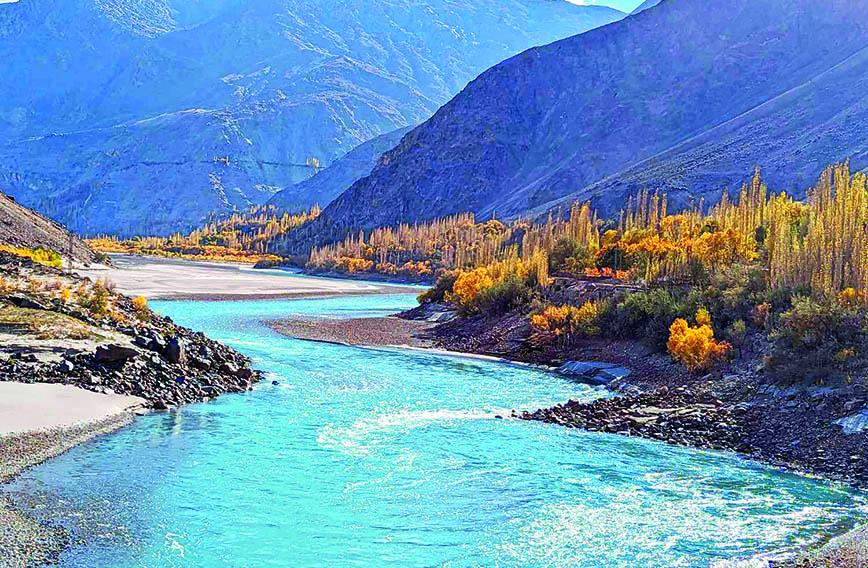
VENKATESH DUTTA
The bilateral agreement for sharing of the waters of the Indus between India and Pakistan has survived wars and periods of high tension over more than six decades. It has been regarded as one of the most successful water apportioning arrangements in the world, but no longer, having been suspended by India after the terrorist attack in Pahalgam on April 22.
“Terror and talks cannot go together; water and blood cannot flow together,” Prime Minister Narendra Modi said, justifying the punitive action against Pakistan and putting in abeyance a sharing of waters that has been extremely generous to Pakistan.
India has control of about 30 percent of the waters of the rivers in the Indus basin while 70 percent goes to Pakistan under the Indus Water Treaty (IWT) signed in 1960 by Jawaharlal Nehru and Ayub Khan.
The IWT’s hallmark is that it created partitioning of the rivers rather than developing a holistic agreement on sharing of their waters. Pakistan pursued arbitration in The Hague, while India referred the matter to a neutral expert, leading to a procedural standoff. The World Bank controversially allowed both paths to proceed simultaneously and then weighed in heavily to have the IWT signed.
The Indus river system comprises the main channel — the Indus river — along with its five left-bank tributaries, namely, the Ravi, the Beas, the Sutlej, the Jhelum and the Chenab. The right-bank tributary, the Kabul river, does not flow through India. The waters of the Indus river system rise mainly in Tibet and the Himalayan mountains in the states of Himachal Pradesh and Jammu and Kashmir. They flow through the states of Punjab and Sindh before emptying into the Arabian Sea, south of Karachi and Kori Creek in Gujarat. Two major irrigation structures — one at Madhopur on the Ravi and the other at Ferozepur on the Sutlej, on which canal irrigation in Pakistan’s Punjab is entirely reliant — fall within Indian territory.
For the sake of simplicity, the Indus river basin has been divided into the eastern rivers and the western rivers. The Ravi, Beas and Sutlej are grouped under the eastern rivers and come under Indian control whereas the Indus, Chenab and Jhelum are grouped under the western rivers and are under the control of Pakistan.
The eastern rivers have a total annual flow of about 41 billion cubic metres (BCM) while the western rivers have more than double the flow of eastern rivers, roughly about 90 BCM. This translates into India getting 30 percent and Pakistan 70 percent which has prevailed but also often been questioned. In 2016 a PIL was filed in the Supreme Court of India seeking to declare the treaty unconstitutional.
Overall, the Indus river system carries an average annual flow of nearly 260 BCM of which India is able to utilize only 38 BCM (about 15 percent) from the three eastern rivers. The treaty allows India to access the water of the western rivers for ‘limited irrigation’ use and ‘unlimited non-consumptive’ uses such as power generation, navigation, fisheries, and so on.
According to Article 5.1 of the IWT, India agreed to make a fixed contribution of
£62,060,000 or 125 metric tonnes of gold when the gold standard was followed, towards the cost of construction of new headworks and canal systems for irrigation from the western rivers in Punjab province of Pakistan.
India paid the total amount in 10 equal annual instalments despite the 1965 Indo-Pakistan war. Both countries agreed in the treaty to exchange hydrological data and cooperate in the optimum use of water from the Indus rivers. For this purpose, the treaty created the Permanent Indus Commission, with a commissioner appointed by each country.
After the recent temporary suspension, India released a substantial volume of water into the Chenab from the Reasi’s Salal and Baglihar dams in Jammu and Kashmir. This led to a sharp increase in downstream water levels and has raised an alarm in Pakistan. Further, the Uri-II hydroelectric project dam on the Jhelum which flows from Kashmir into Pakistan- occupied Kashmir (PoK) near Uri in Kashmir’s Baramulla district also released water downstream. The water level was constantly rising due to heavy rainfall which led to opening of the gates of the Salal and Baglihar dams, leading to increased water flow into the Chenab.
There are some fundamental questions to ponder — does India have the infrastructural capacity to divert large volumes of water upstream and deprive downstream communities of their share? Is unilateral suspension of the treaty permissible under international law?
Article 62 of the Vienna Convention on the Law of Treaties allows termination or suspension if there is a “fundamental change of circumstances” though this is rarely invoked and hard to justify under international scrutiny. India has not withdrawn from the treaty but is using its provisions more assertively while linking broader cooperation to Pakistan’s actions on terrorism.
While the IWT is technically apolitical and administered through a permanent Indus Commission, India has used procedural mechanisms under the treaty (like seeking modifications or arbitration) to signal its displeasure, while also exploring increased use of its allocated waters from the western rivers under the treaty.
With the treaty no longer binding, India would face no restrictions on storing water from the western rivers, especially the Jhelum, enabling it to implement a range of flood control measures to manage flooding in the Kashmir Valley. This could also allow for more assertive use or redesign of hydropower and irrigation projects, potentially reshaping flow regimes and impacting downstream agriculture and water availability in Pakistan. ν
Venkatesh Dutta is a Gomti River Waterkeeper and a professor of environmental sciences at Ambedkar University, Lucknow
Comments
Currently there are no Comments. Be first to write a comment!




